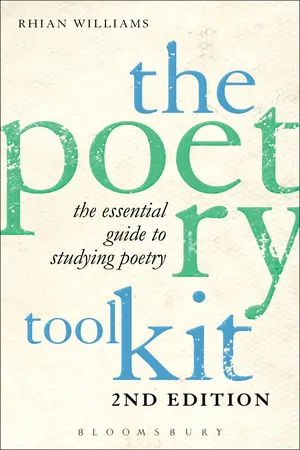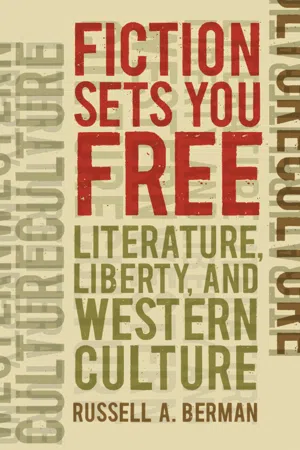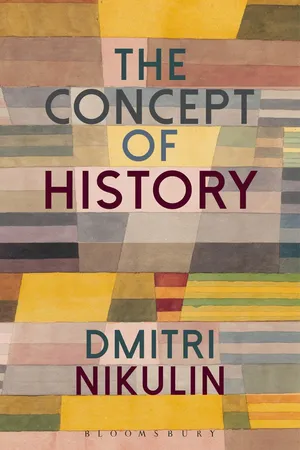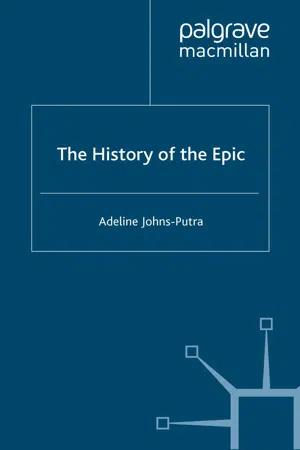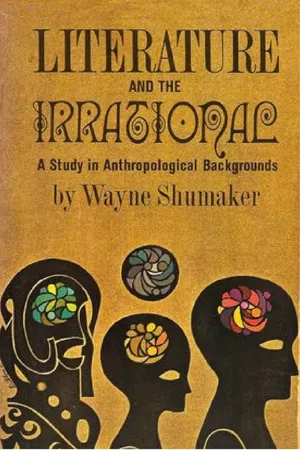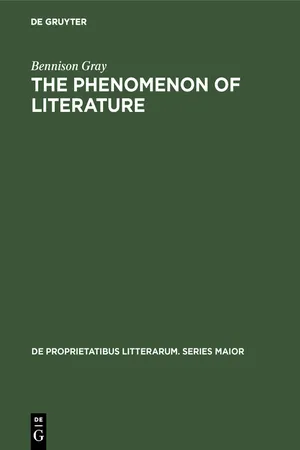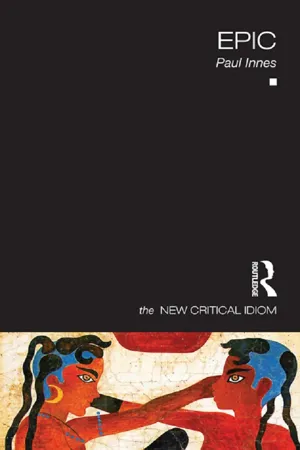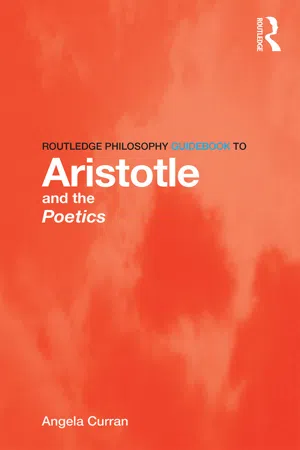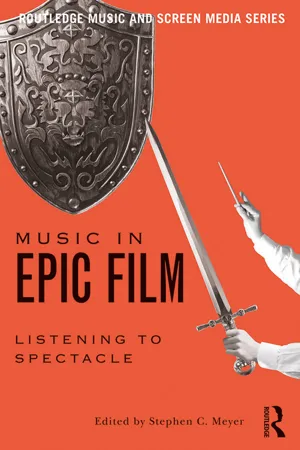Literature
Epic Poetry
Epic poetry is a genre of literature that typically features a long narrative poem, often centered around heroic deeds and legendary figures. These poems are known for their grand scale, elevated language, and exploration of universal themes. Examples of epic poetry include Homer's "Iliad" and "Odyssey," Virgil's "Aeneid," and Milton's "Paradise Lost."
Written by Perlego with AI-assistance
Related key terms
1 of 5
11 Key excerpts on "Epic Poetry"
- eBook - PDF
- Rhian Williams(Author)
- 2013(Publication Date)
- Bloomsbury Academic(Publisher)
Clearly, it is useful to know something about those traditions in order to be alert to the poem’s energetic approach to what it is expected and what it in fact delivers. In many intriguing ways, it is formal features (literally the shape, sound and size of the poem itself) that dictate the nature of poetic modes and genres: these will be considered in following chapters. This chapter, however, shall begin by uncovering some of the types and conventions that have shaped poetry as a tradition in Anglophone culture. Reference Ramanzani, Jahan, ‘Hardy Elegies for an Era: “By the Century’s Deathbed”’, Victorian Poetry 29 (1991), 131–43. Epic A long narrative poem that follows the fate of an individual or tribe. Traditionally the epic is associated with Classical Greece, and texts such as Homer’s Iliad and The Odyssey are typical. Yet this long, narrative form – addressing the trials, tribulations, heroisms and victories of a nation and its people – occurs in many world cultures and in all kinds of languages. Indeed, Adeline Johns-Putra’s history of epic denies that any one definition can ever be satisfactory. Rather, the epic’s grand ambition, which is to present the fate of different individuals within the history of a whole nation, or even cosmology, is remarkable for the many moves it makes between ideas: between the large- and small-scale, between nature and nurture, between the past and the present, and between the human and the superhuman. Epic speaks to the heart of nation-building and so is a rich source of the myths and values that a society adopts, accepts as natural, and enjoys retelling. As such, it is often taken up for ambitious political and social reasons: in order to re-examine and redraw the social landscape, writers seek to return to the foundation myths that underpin it. Epic writers across the world and across the centuries have sought to return to, and modify, those stories and modes with ambitious aims, and the tradition continues today. - eBook - PDF
Fiction Sets You Free
Literature, Liberty, and Western Culture
- Russell A. Berman(Author)
- 2007(Publication Date)
- University Of Iowa Press(Publisher)
The heroic epics, one may conjecture, were specifically written works, even if they drew on some preliterate tales, reorganized into lengthy narratives, and even if they were destined typically for oral performance (in contexts where lit-eracy was still uncommon). We should not read them as records of a way of life in societies of primary orality — that is to say, with an anthropological eye — but rather as explorations of an increasingly autonomous form of ex-pression associated with writing and its corollary innovations, especially the development of a logocentric consciousness, hostile to oral traditionalism: Consider, for example, the affective displacement inherent in the transition from Achilles’ mercurial anger to Odysseus’s instrumental reason, a histori-cal transformation that structures the relationship of the two Homeric epics to each other and indicates the growing impact of writing on culture. Epic literature is about the heroism of the deed, but it is ultimately driven by that one most innovative deed, writing, just as much as by the civilizational abil-ity to recall and regret the violence that has taken place in the name of prog- 104 The Epic and the Individual ress. One may even presume that that capacity for regret on a grand scale, which requires extended memory, is itself a product of writing. Writing is progress that can reflect on its own cost. It is the genuine heroism, and the epic as form is the record of the cultural and social transition from orality to literacy. The Iliad takes note of the duplicity and danger associated with limited literacy in the Bellerophon narrative; and the defeat of poetic orality is enacted in the sirens episode of the Odyssey . Similarly, the literate narrator of the Nibelungenlied can position himself so as to condemn, retrospectively, the oral poet Volker, associated with a particularly primitive savagery. Yet we should be cautious not to overstate the rationality of conscious-ness after the great divide. - eBook - PDF
- Dmitri Nikulin(Author)
- 2017(Publication Date)
- Bloomsbury Academic(Publisher)
Epic intentions and ambitions are also present in many modern literary pieces pivotal for the development of the modern novel (e.g., in The epic of history 51 James Joyce’s Finnegans Wake ), which is explicitly interested in archaic modes of composition, including the simultaneous superposition of successive events. An important feature of epic, which distinguishes it from other literary genres, is that epic introduces and holds together many narrative parts all at once ( hama ), as if everything were present in one single moment of the a-temporal “absolute” past, that of memory and remembrance removed from any actual historical time. In epic, there are many stories told , all on an equal basis. For this reason, epic often consists of many loosely related, almost independent stories or myths ( polymython ), which contributes to its consid-erable volume. 13 Because epic consists of a great number of episodes that are equal in value, epic is therefore voluminous, detailed, and lengthy , whereas the basic plot is rather simple and short and can be expressed in just a few words. 14 Because the epic past is self-contained, an epic narrative can begin and end at any point, which demonstrates its intrinsic unity (for which Aristotle explicitly praises Homer, calling him “divinely sounding,” thespesios ). 15 Clear beginnings and ends are only added by later poets (e.g., in the Cypria ) who continue and elaborate on the stories and myths told by Homer. 16 Because the stories that are told coexist in the epic past, epic is therefore paratactic : it allows for the simultaneous co-existence, or co-presence, of a number of different parts within the plot or the lines of narrative “placed side by side.” The paratactic whole does not take precedence over its parts, so that while each constituent is meaningful within the context of the unified whole, each part is also nevertheless independent and is not ultimately determined by the whole as such. - eBook - PDF
- A. Johns-Putra(Author)
- 2006(Publication Date)
- Palgrave Macmillan(Publisher)
Perhaps the best way to answer the question is to investigate fully the plurality of responses, both past and present. In other words, rather than searching for a single definition of the epic, it is more fruitful to move beyond definitions. Instead of throwing up our hands in despair over the epic’s apparent indeterminacy, we could attempt to engage with that very indeterminacy. It is easy to think that the problems of defining the epic lie primarily with the epic itself. After all, a simple definition of the epic would have to account 2 The History of the Epic for the endless variations displayed by all the texts currently considered epic, even if we restrict ourselves to the literary canon. Yet, to attempt a detailed definition, adding as many features as possible to the list, is to render it unwieldy and, what is more, potentially self-contradictory. For example, the simple definition of the epic as a long heroic and nationalistic poem would include Virgil’s Aeneid but exclude Dante’s Divina Commedia, while the reference to heroism would subsume the Homeric epics but might create problems for Paradise Lost. Inversely, to scale down the definition and to work with just one or two prerequisites is to cease to have a definition at all. For example, to define the epic simply as a long poem is to rely on a single and therefore useless criterion, since length is a feature of many works of literature not considered to be epics. The fact is that so many of the charac- teristics we associate with epic – great length, awe-inspiring heroism, nationalism – are traits that the form has displayed at some times but not at others. The fact is that epic itself is changeful and indeterminate. To understand fully the indeterminacy of the epic, we must look beyond the epic, to the issue of genre. This is because the question of what the epic is, and indeed the very validity of that question, is based on larger problems about genre and how it functions. - Wayne Shumaker(Author)
- 2016(Publication Date)
- Hauraki Publishing(Publisher)
7—The Major Literary Types: Epic and Lyric Poetry
Antiquity of Greek epic
When we pass from drama to epic, we encounter formal tendencies that in Greece, if not everywhere, were more ancient still. If Cassirer, among others, was right in thinking that “myth is the epic element in primitive religious life; rite is the dramatic element,”{397} the ultimate origins of the two are identical; but Greek epic attained an aesthetically sophisticated development well in advance of drama. Aristotle clearly recognized drama as derivative. Homer’s Margites, he says, “bears the same relation to Comedy that the Iliad and Odyssey do to Tragedy”; and “the Epic poets were succeeded by Tragedians.”{398} In general, Greek tragedy drew its materials from heroic saga: the Homeric poems together with shorter epics or lays like the Cypria and the Little Iliad. {399} But the meters of tragedy appear to have been taken from the sung or chanted lyric,{400} which, as we shall see later, has some claim to being the oldest literary form of all. On the whole, it will be sufficiently accurate to regard epic as immensely ancient. Common sense would suggest that stories must have been told, with or without meter, before they were acted out. Common sense, however, is an unsafe guide. In some parts of the world, group gestures, either accompanied by ritual words from the beginning or gradually fitted out with them, may have become formalized into art in advance of the tales told by individuals in front of campfires or in shady resting places.Epic as Heldensage
Epic as we know it may or may not be continuous with cosmological myths similar to those which have been discovered in most of the primitive cultures studied by anthropologists. If continuous, such epics as the Iliad and the Odyssey resulted from a partial humanization of legends once wholly divine; but the possibility is by no means negligible that historical occurrences, involving real human beings, were gradually mythologized. Again, of course, both processes may have gone on at once and become inextricably mixed. In any event, the typical Western epic is basically a Heldensage.- No longer available |Learn more
The Complete Works of Aristotle. Illustrated
Logic, Universal Physics, Human Physics, Animal Physics, Metaphysics, Ethics and Politics and others
- Aristotle, E. M. Edghill, Octavius Freire Owen, A. J. Jenkinson, G. R. G. Mure, W. A. Pickard-Cambridge, R. P. Hardie, R. K. Gaye, J. L. Stocks, E. W. Webster, Frederic G. Kenyon, S. H. Butcher, E. S. Forster, W. Rhys Roberts, W. D. Ross, H. Rackham, Benjamin Jowett, G. C. Armstrong, W. S. Hett, T. Loveday, A, E. M. Edghill, Octavius Freire Owen, A. J. Jenkinson, G. R. G. Mure, W. A. Pickard-Cambridge, R. P. Hardie, R. K. Gaye, J. L. Stocks, E. W. Webster, Frederic G. Kenyon, S. H. Butcher, E. S. Forster, W. Rhys Roberts, W. D. Ross, H. Rackham, Benjamin Jowett, G. C. Armstrong, W. S. Hett, T. Loveday, Arthur Platt, A. S. L(Authors)
- 2021(Publication Date)
- Strelbytskyy Multimedia Publishing(Publisher)
Epic Poetry agrees with Tragedy in so far as it is an imitation in verse of characters of a higher type. They differ in that Epic Poetry admits but one kind of meter and is narrative in form. They differ, again, in their length: for Tragedy endeavors, as far as possible, to confine itself to a single revolution of the sun, or but slightly to exceed this limit, whereas the Epic action has no limits of time. This, then, is a second point of difference; though at first the same freedom was admitted in Tragedy as in Epic Poetry.Of their constituent parts some are common to both, some peculiar to Tragedy: whoever, therefore knows what is good or bad Tragedy, knows also about Epic Poetry. All the elements of an Epic poem are found in Tragedy, but the elements of a Tragedy are not all found in the Epic poem.VIOf the poetry which imitates in hexameter verse, and of Comedy, we will speak hereafter. Let us now discuss Tragedy, resuming its formal definition, as resulting from what has been already said.Tragedy, then, is an imitation of an action that is serious, complete, and of a certain magnitude; in language embellished with each kind of artistic ornament, the several kinds being found in separate parts of the play; in the form of action, not of narrative; through pity and fear effecting the proper purgation of these emotions. By ‘language embellished,’ I mean language into which rhythm, ‘harmony’ and song enter. By ‘the several kinds in separate parts,’ I mean, that some parts are rendered through the medium of verse alone, others again with the aid of song.Now as tragic imitation implies persons acting, it necessarily follows in the first place, that Spectacular equipment will be a part of Tragedy. Next, Song and Diction, for these are the media of imitation. By ‘Diction’ I mean the mere metrical arrangement of the words: as for ‘Song,’ it is a term whose sense every one understands. - eBook - PDF
- Bennison Gray(Author)
- 2018(Publication Date)
- De Gruyter Mouton(Publisher)
50. 15 New York, 1953, 268. 214 THE FORMS OF LITERATURE literature by the size of the event; then there ceases altogether to be an event. A feeling about someone or something is not an event, however limited, at all. A statement cannot both be a bit of history and yet not present an external happening. Events and contempla-tion are not just two different kinds of things; they are opposites. And all the lumping together of statements of events and statements of contemplation under the label lyric are still not going to make them one. The problem of the epic can be resolved by recognizing that archetypal classification has no place in a systematic taxonomy. The problem of the drama can be resolved by recognizing that supplementary systems of classification are quite acceptable but that cross-classification within a system is not. The problem of the lyric can be resolved by recognizing that the necessary price for gaining a precise definition of a traditional concept is the sacrifice of some of the instances usually covered by the concept. Now the question is whether these three traditional categories when sufficiently modified can form the basis of a literary taxonomy. The usual modification of epic is to convert it into a generic term for story. This is playing rather fast and loose with a concept that, whatever its inadequacies, has referred for centuries to a very limited class of works within the large and amorphous class usually termed stories. But the temptation to do this is easily understood: it seems to allow then for three large inclusive categories of distinctly different kinds. As to basic structure or form, a work of literature would be (1) an unmediated act of utterance - lyric, (2) a series of mediated utterances - drama, (3) a mediated narrative - story. When we analyze these three in detail for the purpose of defining and delimiting, we find that they do not cover all the logical and actual possibilities of literary structure. - Epic and the novel both constitute sites in which different forms of communality and individualism are played out and contested. The Romantic poets sought to enhance the power of the individual artistic imagination, at the same time as the novel attempted to represent the individual life in its full social and domestic existence. However, the novel not only makes use of narratives descended from epic, it also enhances and refines them to the point where the form itself eventually attains a cultural status that is at least equal to the residual aura enjoyed by the epic, as it becomes the most socially pervasive of all powerful literary forms. In his influential account of the rise of the historical novel, the Hungarian Marxist critic Georg Lukacs argued that the narrative form that mediated between historical drama and the epic was the historical novel, the vehicle par excellence of bourgeois ideology as it reflected the epic rise of the middle class to literary pre-eminence (Lukacs 1983: 89–105). According to Jerome de Groot, Lukacs claimed that the novels of Sir Walter Scott indicate the historical juncture at which this bourgeois culture engaged with its own history in its rise to prominence: Essentially, then, the uproar of the times led to a new sense of historicity, manifest in the notion of historical progress, the possibility of change, and the individuated importance of these concepts. Specifically, these changes were expressed through the historical form of that genre. (de Groot 2010: 26) Previously, an engagement with such concepts was the carefully circumscribed role of the epic, where the hero was an exemplary representative of a social order, which recalls our discussion of Aristotle in Chapter 2. However, in a society in which one very large social class rises to prominence, the epic requires to be adapted in such a way as to emphasise the emergence of ‘novel’ social forces that require their own distinct narratives
- eBook - ePub
- Guido Mazzoni, Zakiya Hanafi(Authors)
- 2022(Publication Date)
- Belknap Press(Publisher)
3Following Goethe’s reasoning, we might say that The Cantos by Pound, Le ceneri di Gramsci by Pasolini, and “The Glass Essay” by Carson mix lyrical and narrative elements, that Bertolt Brecht’s theater superimposes epic forms on top of dramatic forms, and that first-person novels based on style cast a lyrical patina over the epic subject matter of the story. Although theoretical categories do not correspond to historical genres, there do exist empirical forms that almost match the ideal archetype: ones that are almost entirely narrative, dramatic, or lyrical, as Goethe viewed the “purely epic” poetry of Homer.4 A Greek epos is almost always narrative: the interest falls on the doings of the heroes and not on the bard’s style, which transcends the personal; a fully dramatic text for the theater is one that succeeds in creating a perfect mimetic illusion according to the convention of the fourth wall; a lyric poem is one in which a first person speaks about itself in a strongly distinctive style.Some consider this division to be immanent to the logic of literature, in part, perhaps, because this theory of the three genres appears to have deep linguistic roots. These are the same roots from which the system of personal pronouns arose, following the tripartite schema of I-you-he / her / it in every language, almost as if it mirrored the elementary anthropological structures of identity and otherness.5 We find the same patterns again in the three major groupings of lyric, drama, and narrative, oriented respectively toward the first, second, and third persons.6 The history of literature shows us instead that the modern triad actually has a specific genealogy: it did not exist before the Romantic age, and even when it began to exist in embryonic form, it had a minor status compared to another way of dividing up the literary space. This latter way was much more ancient, much more illustrious, and utterly impossible to reconcile with the genre of the lyric.7 - Angela Curran(Author)
- 2015(Publication Date)
- Routledge(Publisher)
If, as Aristotle sometimes suggests (Poetics 4.1448b35), epic is a prototype for tragedy, then we would expect that epic does not have its own distinctive pleasure, and it aims for the same emotional effect as tragedy, but is less successful at this. This is what Aristotle seems to say in Poetics 26 when he argues that tragedy is superior to epic in its artistic effect (1462b12). Yet we would expect that the distinct mode of storytelling that epic employs (narrative not dramatic enactment) and its different time frame might imply that there are unique emotional experiences that epic can make available to the audience that tragedy cannot provide. For while both epic and tragedy mandate that the audience imagine a fictional world, the ways in which the audiences of each genre come to imagine the world represented in the fiction are unique to each type of drama. POETICS 25: THE RIGHT WAY TO BE A CRITIC OF POETRY Poetics 25 is a rather difficult and confusing chapter in which Aristotle discusses the standards of correctness and effectiveness in poetry. His concern is with “problems” (problēmata) and their solutions (1460b6). A problem is an apparent flaw in the work that can be solved if we keep in mind such factors as how poets use language and the fact that the poet is an imitator. Many of his replies to problems involve keeping in mind poetry’s goal of being a work that is an imitation of some reality. Aristotle stresses that poetry does not have the same standards of correctness as politics (politikē, Aristotle’s term for ethics in public and private life) or any other art (25.1460b14). He expands on this point by suggesting that faithfulness to historical or scientific fact is not a failing that need imply a defect in the work as a whole: “It is less serious not to know that a female deer has not horns than to depict one unconvincingly” (1460b30–32)- eBook - ePub
Music in Epic Film
Listening to Spectacle
- Stephen Meyer, Stephen C. Meyer(Authors)
- 2016(Publication Date)
- Routledge(Publisher)
18 It is not just epics that have epic situations: any constellation of narrator, narration, and audience constitutes an epic situation, be it ever so vague, and every instance of storytelling has all three of these terms, be they ever so hidden. In most narratives the epic situation is made transparent to the point of invisibility. Stories like these—which we call dramatic or representational—make every attempt to erase the narrator and the narration, leaving behind only the narrated events, which are brought to life with as much verisimilitude as the author can muster.In epic or presentational narration, the opposite is true. Self-conscious references to storytelling are a defining feature of the literary epic: the Mahabharata begins with an account of the writing of the Mahabharata; Homer interposes himself between us and the Iliad; the most extensive version of the Gilgamesh epic begins with a remarkable invocation not only of its writing, but of its reading. These constant references to narration are no mere stylistic quirk. Self-referential gestures make the epic situation opaque by populating it with characters possessed of definite traits. This reinforces the temporal distance between the audience’s world and the vanished golden age by establishing narrative distance between the audience and the diegesis. If the epic past is brought too vividly to life, the gap between the audience and the heroic age closes, and the work loses its epic quality. The epic narrative tone guards against this possibility, focusing our attention on the pastness of the past (see Diagram 10.3 ).Diagram 10.3 Emotional communication in dramatic and epic storytellingEpic Distance in the Western
The characteristic subject matter and tone of the literary epic can also be found in Owen Wister’s The Virginian: A Horseman of the Plains, which is usually held up as the first true Western novel:19Any narrative which presents faithfully a day and a generation is of necessity historical; and this one presents Wyoming between 1874 and 1890.Had you left New York or San Francisco at ten o’clock this morning, by noon the day after to-morrow you could step out at Cheyenne. There you would stand at the heart of the world that is the subject of my picture, yet you would look around you in vain for the reality. It is a vanished world. No journeys, save those which memory can take, will bring you to it now. The mountains are there, far and shining, and the sunlight, and the infinite earth, and the air that seems forever the true fountain of youth—but where is the buffalo, and the wild antelope, and where the horseman with his pasturing thousands? So like its old self does the sage-brush seem when revisited, that you wait for the horseman to appear.
Index pages curate the most relevant extracts from our library of academic textbooks. They’ve been created using an in-house natural language model (NLM), each adding context and meaning to key research topics.
